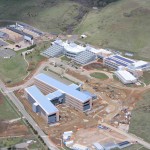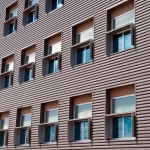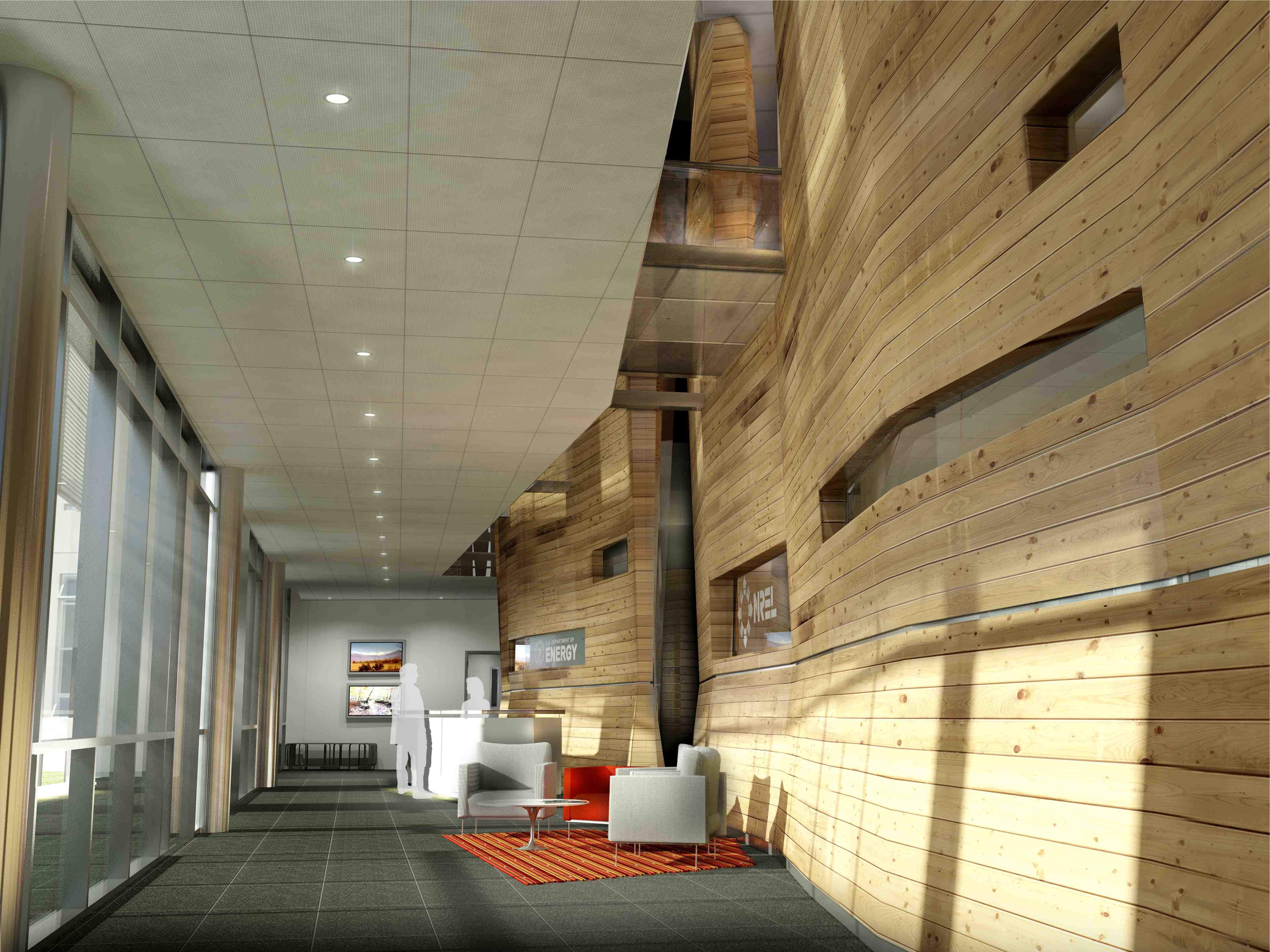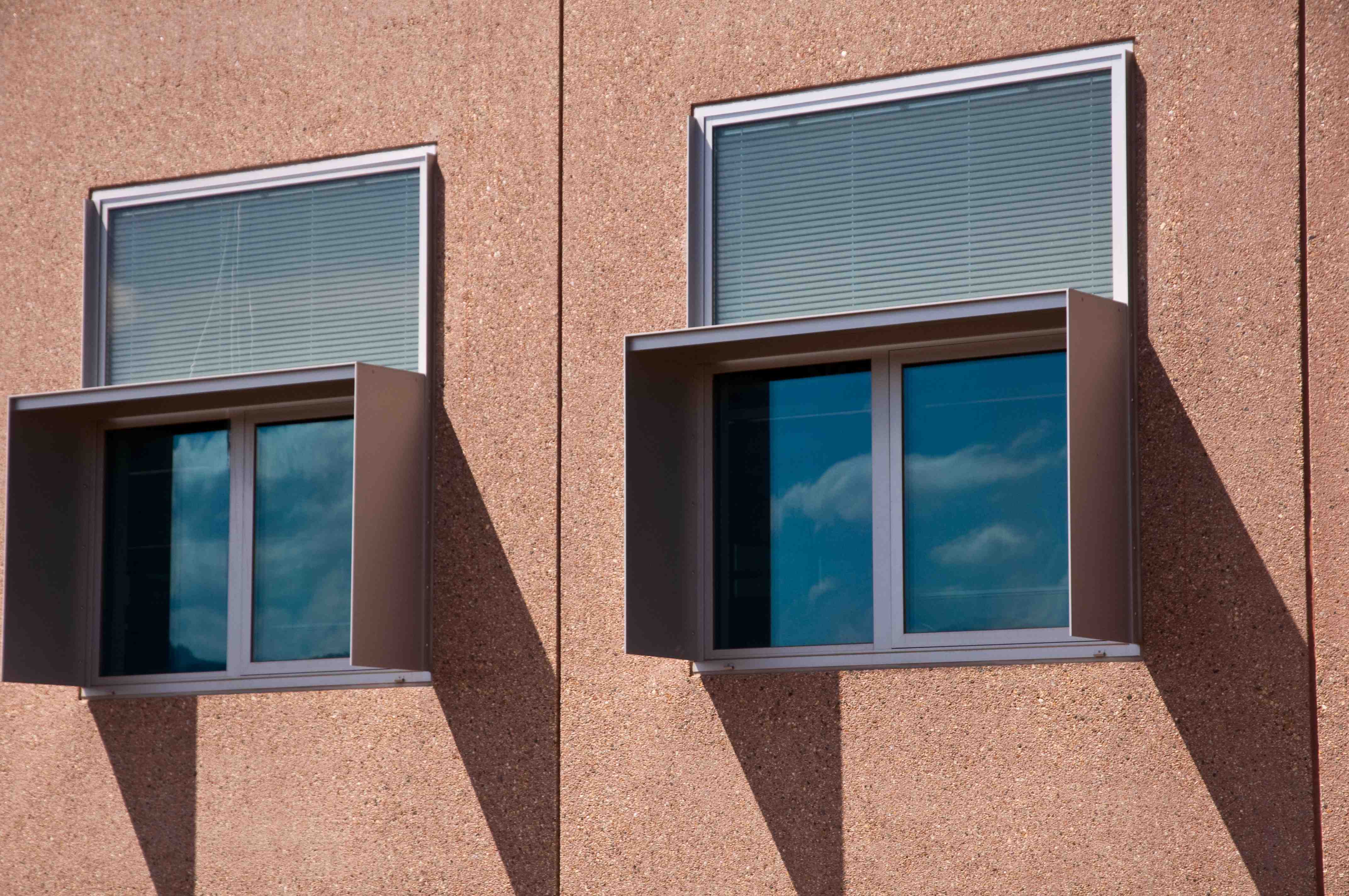08.18.10 Client News
Wausau’s window systems support the National Renewable Energy Laboratory’s LEED-Platinum and net-zero energy building goals
With a grand opening planned for late August, the new Research Support Facility for the U.S. Department of Energy‘s (DOE) National Renewable Energy Laboratory (NREL) provides a model project, created to be one of the most energy-efficient and healthy workplaces in the world. Registered with U.S. Green Building Council‘s LEED® Green Rating System, the project seeks Platinum certification, the highest level attainable.
Striving to serve as the new benchmark for green buildings, the 222,000-square-foot facility features nearly 600 high-performance window units manufactured by Wausau Window and Wall Systems. Wausau worked closely with glazing contractor J.R. Butler, Inc., Haselden Construction, RNL’s Denver area architects and NREL’s entire design/build team to incorporate innovative approaches to optimize visible light and views, to control the natural ventilation and unwanted heat gain, and to manage the abundant, natural light.
The building’s orientation and geometry is integral to the glazing systems’ effectiveness. The H-shaped configuration established by RNL and Haselden Construction unites two, 60-foot-wide, multi-story office wings with a central corridor and courtyards. Located in NREL’s South Table Mountain Campus near Golden, Colo., this workplace of the future accommodates 800 employees who previously were occupying leased space in the nearby Denver West Office Park.
Unlike typical office buildings, NREL is a net-zero energy building, which means it is designed to produce as much power as it consumes. Maximizing its energy conservation, the facility’s annual operations were specified as limited to 35,000 BTU per square foot. Estimates indicate that a typical office building built in past 30 years consumes approximately three times more energy. NREL also sought to exceed new construction guidelines for energy efficiency, seeking to perform 50% better than ASHRAE 90.1 2004 standard requirements.
These ambitious energy-efficiency requirements and LEED level aspirations were detailed within the design/build contract. The Research Support Facility’s total project cost $64 million, including all design and contractor fees, interior construction, IT and data cabling, security systems and furnishings.
“Meeting these criteria was tough enough, but the gravity of having it detailed in 500-page contract with the federal government is crucial to understanding the nature of this project,” says Haselden’s design/build project manager Philip Macey, AIA. “Fifty percent of the design/build team’s fee was at risk if we did not satisfy the contract terms. As a team, we pained over each decision with incredible tenacity and detail orientation to meet these commitments.”
“As a design/build partner, we worked very closely with the architect and contractor from the earliest stages of the project’s development,” says Marc Butler, president of J.R. Butler, Inc. “For three years, we were hand-in-hand with all the project’s partners throughout construction. Much of the work was completed on computers and paper, well before fabrication and installation.” In fact, Butler says the glazing team was on-site for nine months, with many of these being the coldest months of the year.
“Not everybody can do this work,” Butler cautions. “The timelines, expectations for functional and aesthetic perfection, and contractual obligations were some of the most challenging that I’ve ever encountered on a building. At times it seemed for every problem we solved, two more were generated. In the end, we met all of the requirements, including staying on schedule and on budget.” As a result, the team already is working on an accelerated schedule for phase two in the Research Support Facility’s construction.
“One of the most powerful drivers in the project is daylight. Daylight and solar energy are at the core of the building and the windows are the vehicle that gets the daylight into the building,” emphasizes Macey. “Free lighting is the most important thing a designer and contractor can give a building owner. It’s also our single biggest challenge. The relationship with Wausau and Viracon was pivotal for us. We spent an enormous amount of time and energy together as a team.”
Butler agrees, “The building’s skin was the most critical and important part of this project. Wausau and Viracon played invaluable roles as the project incorporates lots of natural light. During an average day (at the Research Support Facility), you should never have to turn on the lights.” Every workstation has 100% daylighting and no workstation is more than 30-feet from an operable window.
At night, the building’s climate sensors automatically open the clerestory windows to purge unwanted heat from the building, naturally cooling it for the next business day. In the colder months, a “labyrinth” thermal storage system stores and returns heat into the building to maintain a comfortable, indoor temperature. Butler adds, “It’s a smart alterative to having the air conditioning or heating kicking on. Instead, the window system helps react and adjust to the building’s needs throughout the day and throughout the seasons.”
To ensure that the amount and types of glass used on the building did not interfere with the thermal performance, Haselden, J.R. Butler, Wausau and Viracon were in regular contact with the project’s engineering firm, Stantec, Inc. “Stantec provided an exquisitely detailed energy model based on the initial design,” Macey recalls. “Did we get the recipe right the first time? No. We were way over the energy goals and had a serious problem to solve. To cost-effectively bring us into the energy performance requirements took commitment and finesse.”
Butler explains, “We conducted intensive and extensive thermal modeling. We looked at every framing member. Anytime that a modification was made, Stantec would input the data into a whole computer bank that was dedicated to our calculations.”
As a result of this complex modeling, Butler says, “At least, eight different types of glass were specified. It’s a game of subtleties to determine the exact balance. For example, triple-pane insulated glass increases the insulation and thermal performance, but it can reduce the visible light transmittance, which is needed for office work.”
To push light more deeply into the building’s interior, some of the window units feature “light louvers.” Macey describes their application: “These use mirrored material and an upward-turned, parabolic shape to reflect the light. Bright-toned paints on the interior walls, low-walled workstations and 13-foot-high ceilings help to maximize the sunlight’s penetration from the average of 20 feet to 30 feet inside the office.”
On the exterior, “the bonnets” are among another of NREL’s window systems’ many innovative approaches to finding the right balance of thermal and visual comfort. “Wausau created these custom, sun shade assemblies to box the windows. From the exterior, it looks clean and from the interior, it cuts the severe sun angles,” notes Butler.
The windows’ “bonnets” help reduce uncomfortable glare, such as on computer monitors. Electronically tintable glass also provides glare control, which has been attributed to enhancing occupants’ comfort and increasing productivity. Wausau incorporated electrochromic SageGlass® products into its SuperWall system. To facilitate installation, J.R. Butler developed a flexible conduit for the wiring that controls the innovative, electronically tintable glass along the central corridor.
To implement these cutting-edge achievements for the new Research Support Facility, Butler says that the traditional boundaries of responsibility often were blurred. “This collaborative, design-build model is one that we seeing coming more and more. For NREL, it went beyond the architect, the owner and the general contractor. It meant that we were teaming with the pre-caster to build the window systems’ embeds so the caulk joints looked perfect. We were working with the mechanical contractor to ensure we had the correct balance of heating and cooling loads. We were side-by-side with the electrical contractor on the wiring to ensure the proper activation for the window systems’ auto-operators. All in all, there were some great lessons learned, and Wausau and Viracon played valuable roles.”
In addition to high-performance glass, recycled aluminum content and durable finishes also were specified for NREL using Wausau’s 4250 Series windows and SuperWall systems. Part of the Advantage by Wausau, these standard products are manufactured in Wausau’s own LEED-Silver facility, competitively priced and delivered on accelerated schedules. They also are available with aluminum extrusions exclusively from secondary billet that contain at least 70% total recycled content.
Linetec finished the recycled aluminum framing material in a durable, Kynar® coating, and supplied the thermal barrier system. A silver-hued mica coating presents an eye-catching, metallic shimmer that withstands the exterior elements. The liquid coating is applied in Linetec’s factory using specialized equipment to safely capture 100% of the volatile organic compounds (VOCs) released in the painting process, and to destroy these captured VOCs with environmental sensitivity.
Other environmentally-sound, energy-efficient building features on NREL’s Research Support Facility include:
* Precast concrete insulated panels
* Radiant heating and cooling
* Underfloor ventilation
* Energy-efficient data center and workstations
* High-efficient computers, monitors and other devices
* Transpired solar collectors
* On-site solar energy system
* Recycled materials, such as aggregate from an airport runway
* Reclaimed materials, such as steel structural columns from former, natural gas piping
**
National Renewable Energy Laboratory‘s Research Support Facility
South Table Mountain Campus, Colo.
* Owner: U.S. Department of Energy; Washington, D.C.
* Architect: RNL; Denver
* General Contractor: Haselden Construction LLC; Centennial, Colo.
* Engineer: Stantec, Inc.; San Francisco
* Glazing contractor: J.R. Butler, Inc.; Denver
* Glazing systems – manufacturer: Wausau Window and Wall Systems; Wausau, Wis.
* Glazing systems – glass assemblies: Viracon, Inc.; Owatonna, Minn.
* Glazing systems – glass assemblies: SAGE Electrochromics, Inc.; Faribault, Minn.
* Glazing systems – finisher: Linetec, Wausau, Wis.
A PDF of this project success story can be downloaded by clicking here.
Filed under: Buildings + Infrastructure, CLIENT NEWS, Green Goals, Linetec, Projects, USGBC, Wausau Window and Wall Systems




